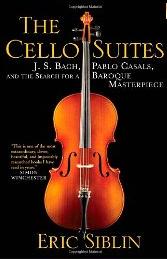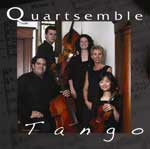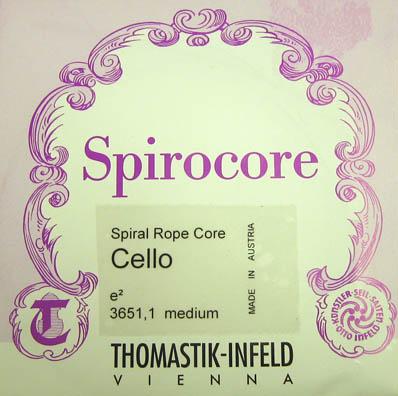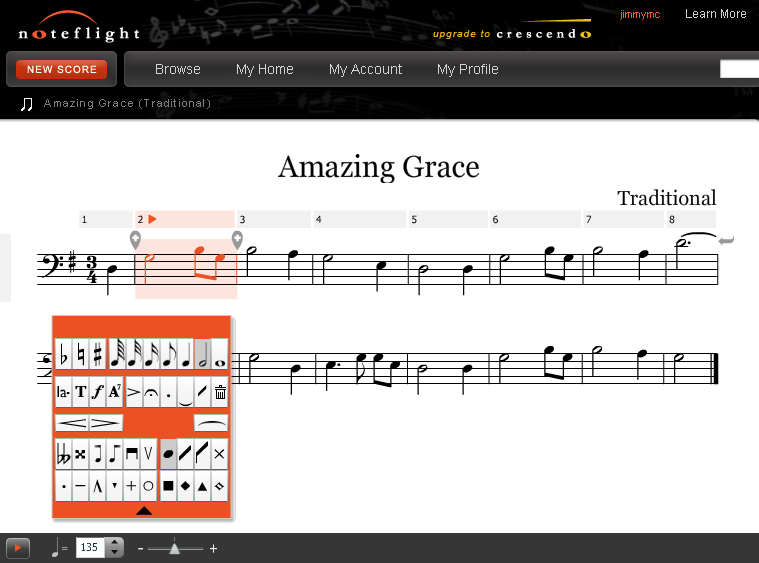
Noteflight
The Cello Suites
 Bach’s “Six Suites for Unaccompanied Cello” seem to be the best known and most recorded music for the cello. Eric Siblin’s excellent book The Cello Suites weaves biographies of Bach and cellist Pablo Casals with the story of the suites, composed around 1717-1723. The book is constructed in the same form as the suites – six “suites” of six chapters each, though Siblin does not attempt to align the text with the music too rigorously. He does successfully propose historical and personal settings for the compositions, most poignantly the groaning sadness of the second Suite and the death of Bach’s beloved first wife Maria. Bach married again the next year, and with his two wives fathered 20 children, which does correspond with his prodigious output of music, and perhaps the frenetic pace of some of the pieces in the Suites!
Bach’s “Six Suites for Unaccompanied Cello” seem to be the best known and most recorded music for the cello. Eric Siblin’s excellent book The Cello Suites weaves biographies of Bach and cellist Pablo Casals with the story of the suites, composed around 1717-1723. The book is constructed in the same form as the suites – six “suites” of six chapters each, though Siblin does not attempt to align the text with the music too rigorously. He does successfully propose historical and personal settings for the compositions, most poignantly the groaning sadness of the second Suite and the death of Bach’s beloved first wife Maria. Bach married again the next year, and with his two wives fathered 20 children, which does correspond with his prodigious output of music, and perhaps the frenetic pace of some of the pieces in the Suites!
I discovered the Suites in this wonderful YouTube video of a youthful Mischa Maisky playing the Sarabande from the first Suite. I’ve since listened to several other famous cellist’s interpretations of this piece and still like Maisky’s the best. Is that because his was the first I heard and the others just don’t seem to play it “right”? I’m guessing that might be a common experience. I also discovered the Sarabande in Jiji’s Cello Playing book and I try to play it sometimes. It’s peppered with double stops, trills, scales and accidentals, but it’s not that hard to play slowly.
At Christmas, my sister gave me CDs of the full Suites by Yo-Yo Ma. At first, the music seemed monotonous and repetitive, a common problem I have when listening to too much new music in one go. But as I began to distinguish the individual movements in my mind and pay attention to their moods and modes, I’ve come to appreciate them much more. Bach explores a broad sweep of emotion, while simultaneously exploring the endless expressive possibilities of the cello. No wonder the pieces were often considered etudes, or practice exercises, and rarely performed publicly before Casals discovered them and made them famous.
 I found the complete sheet music at the International Music Score Library Project and tried playing the Prelude of the first Suite. I haven’t gotten past the first measure yet. It is deceptively simple, but involves a kind of irregular synchronization of fingering and bowing that’s too challenging for my 51 year old hands (or brain). It’s rather like playing a piano rag, where the left hand doesn’t know what the right hand is doing. I’ve never attempted one of those. I can play the first measure slowly, but approaching the right tempo it’s been impossible for me to make those sixteenth notes all sound alike. That little phrase is not so different in sound from some Irish jigs I’ve attempted, but the jigs were obviously designed to be playable by less-than-virtuoso fiddlers and the finger motions are more regular.
I found the complete sheet music at the International Music Score Library Project and tried playing the Prelude of the first Suite. I haven’t gotten past the first measure yet. It is deceptively simple, but involves a kind of irregular synchronization of fingering and bowing that’s too challenging for my 51 year old hands (or brain). It’s rather like playing a piano rag, where the left hand doesn’t know what the right hand is doing. I’ve never attempted one of those. I can play the first measure slowly, but approaching the right tempo it’s been impossible for me to make those sixteenth notes all sound alike. That little phrase is not so different in sound from some Irish jigs I’ve attempted, but the jigs were obviously designed to be playable by less-than-virtuoso fiddlers and the finger motions are more regular.
I believe I’ll get it someday. I’ve found that after trying a difficult phrase over and over for days or weeks, I will suddenly and accidentally do it right, and if I announce the fact loudly to my brain, it seems to be able to repeat the thing. It’s like some sort of programmable robot – if you lead it through the right motions once, it will be able to do it again. The difficulty lies in doing it the first time. Some days when I practice, perhaps because of fatigue, stress or depression, nothing seems to sound good and I want to throw the cello out the window. Other days, I’m feeling good, and relaxed and I just pretend that I know how to play. Those are usually the days I play something nicely for the first time. Playing real slowly and concentrating on getting it all correct just doesn’t work.
In The Cello Suites, Siblin tells about Pablo Casals mountain climbing while on a tour of the U.S. A large boulder fell on Casals’ left hand. Gazing at the crushed fingers, he declared “Thank God, I’ll never have to play the cello again!” Siblin calls it a “curious reaction” but I don’t find it curious at all. Abigail McHugh, a local cello teacher, refers to the cello as “the instrument that continues to alternately delight and aggravate her.” It’s easy to play the cello. It’s very hard indeed to play it well. I guess that’s what keeps us coming back for more. Like a video game, we keep pressing on, to feel the flush of satisfaction when we get to that next level. Though I haven’t gone very far, I suspect the same instinct continues to propel even the greatest cellists.
(Update – May 21, 2010) Today I played the first measure successfully, but not because my hands suddenly and mysteriously found the groove. That measure was never meant to played in first position! My impossible string crossing and fingering problem goes away if I play all but the low G on the D string. I have been shifting for parts of some other songs that were impossible in first position, but it’s still too easy to stay in the rut of thinking that higher positions are harder, or more advanced. Oh well, chalk up another reason for having a teacher!
Incredibow
Imagine a cellist and a pianist arguing over whose instrument is harder to play…
“All you have to do is push buttons. I have to find the notes by ear!”
“But you only have 4 strings to worry about. I have to master 88 keys! And sometimes I have to play 10 of them at once!”
“Sure, but at least your hands are both doing the same thing. Mine have completely different jobs!”
Ridiculous argument, I suppose. Apples and oranges. But that last complaint of the cellist is very real. I find my two hands arguing like that all the time.
“All you do is slide that bow back and forth. My fingers have to find all these notes, and I’m always rushed. Like a blind man shooting hoops!”
“But I have to slide my bow at just the right angle or I hit the wrong string. And I have to keep it in the groove at the same time. And it always wants to slide off – at least you have something to hang on to!”
“I can’t hang on. I have to move around too much. And I have to do the vibrato too!”
“Sure, but I have to remember to change my pressure every time I change strings. And remember to change directions before I run out of bow.”
“But you don’t get calloused, do you?”
“Well, no, but you blame me for all the squeaks, just because I didn’t let up enough when you decide to change notes.”
And on it goes. And they both are always demanding help from mind and eyes. Especially eyes. They each want help finding their place, but the poor eyes can’t be two places at once. I try to tell them they have to do it on their own. I need my eyes to gaze off in the distance, so I can properly enjoy the music, but they won’t listen.
So I try to help them out. Left hand whined that the strings were too high and tight. So I filed the little grooves in the nut, and sanded down the bridge. That was better, but the cheap rosewood fingerboard was scooped too much and it had to be sanded down. Left hand was happier with all that done. He could lighten up a bit, and move around more easily.
Right hand blamed all his troubles on the bow. I had to admit, the very cheap Chinese bow looked and felt like a club. It was heavy, and right hand had to hold it up the whole time. So I felt sorry for right hand and hunted for a better bow. 
Now bows are a strange product. Just this little stick with some hair stretched across it. And I hear you have to replace the hair every so often, so it seems half the bow is disposable. So how much does a nice bow cost? I saw one on eBay for $60,000. Well that must be a rare antique. But normal bows run from $20 to $1000’s. And I’m just a beginner, so I can’t adequately audition a bow. Some people say the bow should cost as much as the cello. But I’m always skeptical of choosing something by price alone.
As I searched the internet for insight, I came across the Incredibow site. Now here was something that appealed to the engineer in me. An ultralight carbon fiber bow, with special artificial hair that lasts for years. And it’s pretensioned – no screwing around every time you want to play. And all for only $130. Reviews were mixed. The consensus seemed to be that people either love or hate it. The rebel against tradition in me guessed that I would love it. So I ordered one – on December 15th.
They warned me that it might not come til the end of January, but I knew it would be worth the wait. So I’ve been waiting, and imagining this incredible bow making my right hand so happy – and so suddenly talented.
The bow came this week. It was packed in a bulletproof piece of PVC pipe, wrapped in black silky cloth with a plastic rose in gold ribbon. I felt very special.
I guess you have to be a good cellist to love or hate it. My feelings are more mixed. The bow is wonderfully light and balanced and easy to hold, and that makes my right hand very happy. The hair seems to work well, though not as magically better as I had allowed my imagination to hope for. I bought the Andrea rosin they recommend, and it does hold the rosin well. The bow is very sturdy – hairs don’t break – and I’m sure the bow wouldn’t break even if I stepped on it. The downside is that it looks pretty sturdy, too. I have to admit that the classic Tourte bow has a special aesthetic appeal to me. Sam came by and played with it and sounded wonderful, as he always does, so I know it’s just me. We’ll have to wait and see.
Quartsemble
This day held a wonderful musical surprise for me! At work, my friend Bill invited me to join him at a free concert and the nearby Hochstein music school. We live in the country – out of town – and sadly have not enjoyed much of the rich live music opportunities of Rochester. Hochstein hosts a series of free lunchtime concerts that are broadcast live on the local classical radio station. Though the school is in the center of the city, surrounded by offices and very accessible, the audience for today’s concert was rather small and seemed to be mostly seniors. The 12:10 to 12:50 concert schedule is designed to fit comfortably in a lunch hour – why didn’t many people take advantage of it? They don’t know what they’re missing.
 Of course, I didn’t know what I was missing. Even now that I am learning cello, I didn’t think to see what live music was available all around me. Thanks to Bill, another thread of the adventure began today with a completely stunning performance by the innovative string quintet Quartsemble.
Of course, I didn’t know what I was missing. Even now that I am learning cello, I didn’t think to see what live music was available all around me. Thanks to Bill, another thread of the adventure began today with a completely stunning performance by the innovative string quintet Quartsemble.
Their website explains that “Founded in 2002 by Karine Stone and Diego Garcia, Quartsemble is an innovative chamber music ensemble based in Rochester, New York and dedicated to performing classical masterpieces side by side with Latin music and more contemporary repertoire” and that’s exactly what they did today. They packed an amazing variety of music into that 40 minute concert. All from composers I’d never heard of. But the best part was the chance to sit in the second row – right up close – and watch and feel the energy and joy they brought to the music. Now that I’m trying to play a string instrument myself, I found it fascinating to study these brilliant musician’s moves on their instruments. And probably more important, they obviously had a great time doing it.
Quartsemble has two violins, a viola, cello and bass. I was fascinated by all of them – not just fixated on the cellist. The violins wrought dazzling things up high on their E strings. The bassist was amazing – I’d always pictured a string bassist plucking away in the background – but this woman was all over the fingerboard, bowing and plucking all kinds of cool sounds. I especially noticed the singing viola, an instrument I’ve not thought much about at all. It’s range overlaps the top of the cello’s and now I’m pondering the roles of the two instruments. Today’s viola passages were sweet and mellow – the very sound I most love from the cello.
I was smitten. I was inspired. I wanted to go home and grab my cello and try some of what I’d seen and heard. It wasn’t the pieces that echoed in my head all afternoon – it was just phrases of music – little passages that pulled you this way and that emotionally. I saw how much passion could flow through the strings. I heard how the freedom to bend and slide and vibrate those little notes could work together to create a river of music that sweeps you away. I’m gushing right now, I suppose, but nothing in the last four months has motivated me to work on the cello like this concert. I have a feeling that’s what live music does. I plan to find out.
I ordered Quartsemble’s CD, titled Tango. I guess I knew a tango was some kind of dance. I’m not sure I knew it was Latin, nor that the dance had inspired a whole genre of music which now soars far beyond the dance. Wikipedia taught me that the piece I heard today by Ástor Piazzolla is tango nuevo. Whatever it’s called, it is pure emotion and energy, but not painfully so, like acid rock is to my ears. This music swoops and swirls with beauty and life. Uh oh… I’m gushing again…
(Update – June 24, 2010) Quartsemble has changed their name to Gibbs & Main)
E String
After the Quartsemble concert, my cello was feeling dull. I know it’s not just because the instrument is cheap. Sam has played it for me a few times and it sounds great in his hands. I just have more work to do. But the soaring violins and sweet viola I heard at that concert, not to mention the lively fiddle tunes Peter is playing, have left me wanting more out of my cello… maybe more than is reasonable to ask!
Anyway, I got the idea to tune it up a bit. I don’t play much on the low C string, and when I do, it doesn’t sound that nice to me. So the next experiment is to raise the range of the cello and get some more top end. If you have a good cello, and you are a good cellist, you can do a lot more at the top end of your A string. But that’s beyond me right now, so I’m cheating.
 I borrowed a guitar E string from my son, shifted the G, D, and A strings over and loaded the E on top. Now I have a sort of octave violin-cello. Playing this was great fun. The E string almost sounded like a violin. Not a fine violin, though. The solid steel guitar string was rather shrill – especially noticeable when crossing from the wound cello A string. There are some 5 string cellos around, particularly electric ones. So I was able to find an E string for the cello, albeit a rather pricey Spirocore string. This string sounds a lot better than the guitar string.
I borrowed a guitar E string from my son, shifted the G, D, and A strings over and loaded the E on top. Now I have a sort of octave violin-cello. Playing this was great fun. The E string almost sounded like a violin. Not a fine violin, though. The solid steel guitar string was rather shrill – especially noticeable when crossing from the wound cello A string. There are some 5 string cellos around, particularly electric ones. So I was able to find an E string for the cello, albeit a rather pricey Spirocore string. This string sounds a lot better than the guitar string.
With the cello tuned up, there’s a new world of sound – of music – to explore. This sort of experimentation should be the pursuit of someone who’s already mastered the standard ways of making music on the cello, but I guess I’m a restless wanderer. Or is it just the engineer trying to improve the process, so the unskilled musician can do more with less work? The latter is probably more true, but I’m learning and having fun, and… I haven’t quit!

